Commonly used bolts
|
|
|
|
|
|
|
|
|
|
|
|
|
|
|
|
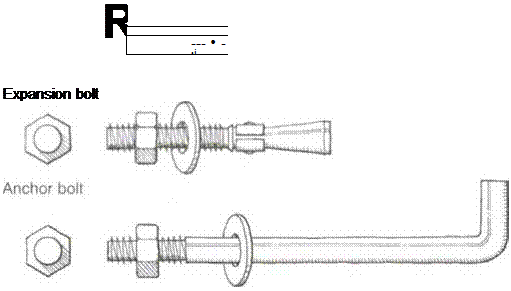 |

![]()
![]()
![]()
![]()

Drywall screws love plywood—they zip through а 3/нп.-thick sheet in nothing flat—so they’re great for attaching sheathing or flooring. But drywall screws are somewhat brittle, so don’t use them in shear walls (which are built to resist the shear forces of earthquakes and high winds) without first getting approval from an engineer or your building department. Drywall screws can also break when being driven into thick stock or hardwoods. I have driven a 3-in. screw through 2×6 decking into a joist
only to hear a snap right before the screw sets. A new, hard-to-break line of interior and exterior drywall screws is now available from Faspac, Inc. (see Sources on p. 198). These screws have self-drilling tips that make them easy to use in thick wood or hardwood.
Deck screws are drywall-type screws that have been coated, galvanized, or made of stainless steel for corrosion resistance. Use these for exterior jobs such as attaching deck boards or fence slats.
Heavy-gauge lag screws (1Л in. dia. and up) are typically used to attach a 2x ledger (a horizontal wood member) to the house framing. They are usually driven into the wood with a wrench. Lag screws are smaller than lag bolts.
Bolts have many applications, from holding a house to the foundation to securing a deck to a wall to uniting a row of kitchen cabinets. When buying bolts, you have to specify the thickness and length you need (3/s in. thick by б in. long, for example). A carpenter often uses carriage, machine, stove, lag, expansion, and anchor bolts (see the drawing on the facing page).
Carriage bolts have round heads, sometimes with a screwdriver slot on top, and are fitted with a washer and nut on the threaded end. I like to use carriage bolts when building deck railings.
Machine bolts have square or hexagonal heads. When using machine bolts to join two pieces of wood, place a washer on both ends before tightening; otherwise, you could tear into the wood. Machine bolts are often used to connect beams in post-and-beam construction and to attach metal plates to the house framing to stabilize it in case of an earthquake or hurricane. Stove bolts are small machine bolts.
Lag bolts are similar to lag screws but go clear through the wood. Lag bolts can be used to fasten a deck ledger to a house (just make sure that you are attaching the ledger to good, solid wood). Because lag bolts are driven into wood like screws, you need to drill pilot holes about Vs in. smaller in diameter than the bolt (a 3/s-in. hole for а Уг-іп. bolt, for example).
Expansion bolts are fitted in holes drilled in existing concrete. They expand in the concrete to ensure a secure hold and are used to attach wood to a foundation or other concrete surface.
Anchor bolts are shaped like a J. They are normally embedded in a concrete foundation to secure wood sills to the foundation, which helps hold a house in place.
There are a wide range of framing anchors (Simpson Strong-Tie Co. is a good source—see Sources on p. 198) that help increase the structural stability of a house (see the drawing on p. 80). Carpenters use joist hangers, right-angle and hurricane clips, plate straps, holddowns, post caps, and T-straps. Anchors are often required by local building codes, particularly in areas of seismic activity or high wind. In other cases, they just make framing faster, easier, and more efficient.
Joist hangers can be nailed to beams or rim joists to support joists for a floor or ceiling. These hangers come in various sizes to fit the joist size and are nailed into the beam through side flanges.
The joist is placed in the hanger and nailed in. A tool made by Ator Tool Works, called a Joister, holds the hanger in place so both your hands can be free for nailing.
Right-angle clips and hurricane clips are widely used to attach one wood member to another. A commonly used right-angle clip is 4У2 in. long with six nail holes in each side. A hurricane clip is a metal device that can be nailed to both rafter and wall plates to hold them securely together. Both types of clips help keep a house in place in earthquake and hurricane country.
|
|||||
|
|||||
|
|||||
|
|||||
|
|||||
|
|||||
|
|||||
|
|||||
|
|||||
|
|||||
|
|||||
|
|||||
|
|||||
|
|||||
|
|||||
|
|||||
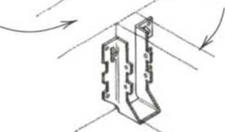
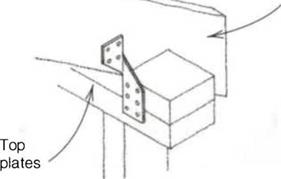
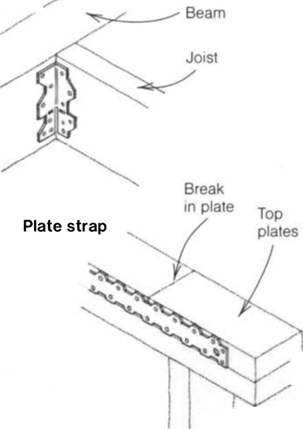
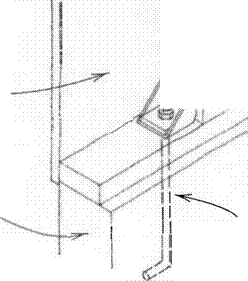









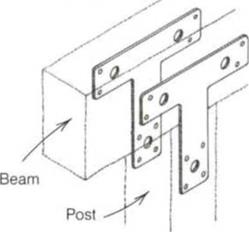
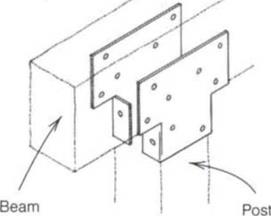
Leave a reply